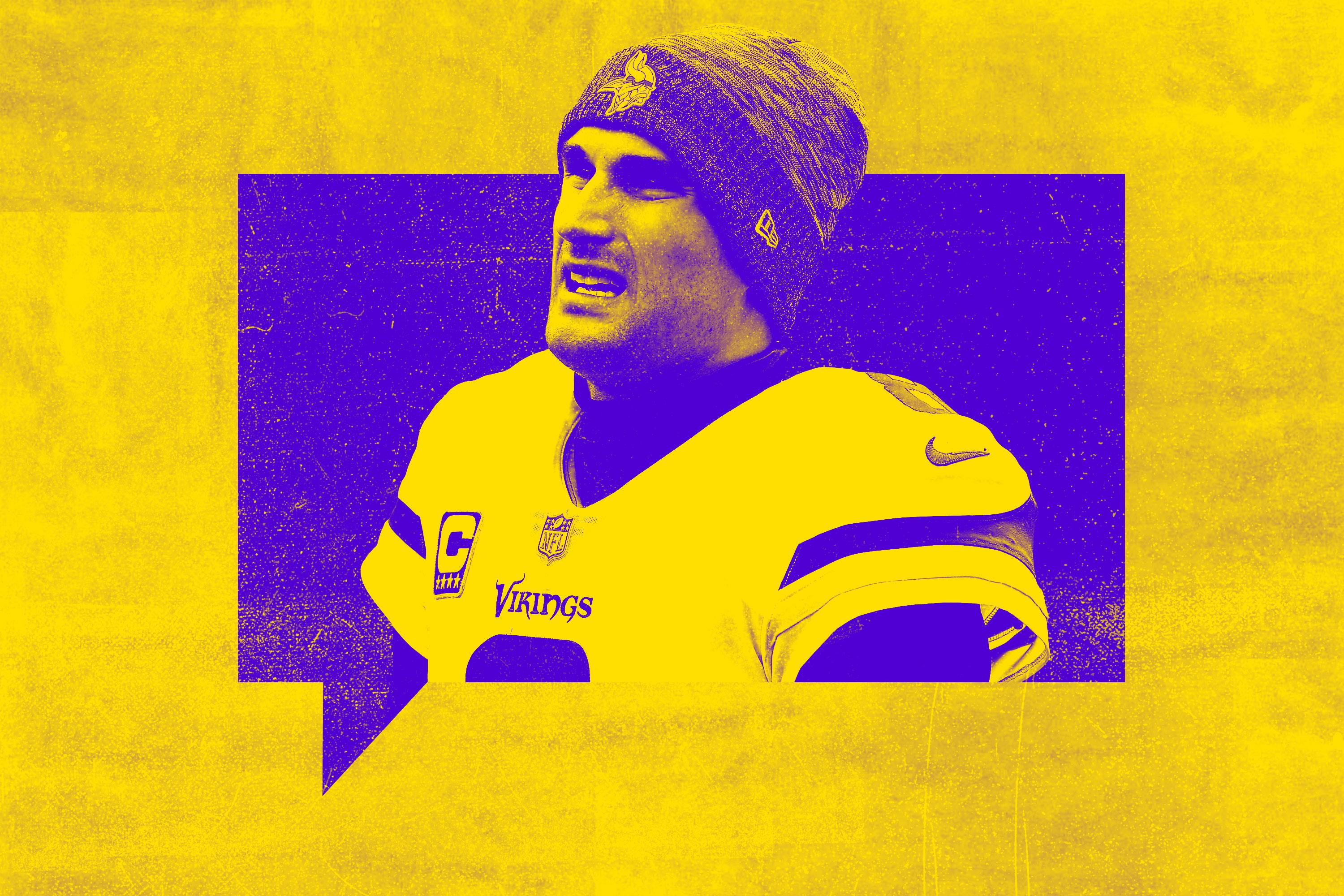
It’s that time of year when some NFL teams have started looking toward next season. As each club is eliminated, The Ringer will examine what went right, what went wrong, and where the franchise could go from here. Up next is the Minnesota Vikings, who were pushed out of the playoffs with a loss to the Chicago Bears on Sunday.
What Went Right
Last year, Adam Thielen was a curiosity. (“Did you know that the white receiver playing for Minnesota is from Minnesota?”) This year, he joined the upper echelon of NFL wide receivers. Thielen started the year with eight straight games with 100 receiving yards, tied with Calvin Johnson (!) for the longest streak, and he was on pace to break Marvin Harrison’s single-season receptions record (143) halfway through the year, though his pace tailed off in the second half. The offensive line persevered through a slew of early-season injuries and rallied to post the seventh-lowest adjusted sack rate in the league, according to Football Outsiders.
The Vikings defense wasn’t quite as good as their dominant 2017, but they remained elite. Minnesota entered Week 17 fourth in defensive DVOA one year after finishing second, continuing the dominance of one of the most schematically complex defenses of the decade. Head coach Mike Zimmer’s squad was once again the toughest defense in the league on third down, allowing conversions on fewer than 30 percent (!) of third downs for the second year in a row. Minnesota’s defense was so good on third down that the 4.8 percent gap between them and the second-place team (the Jets) is larger than the gap between the second-place team and the 14th-ranked Rams. The Vikings entered Week 17 leading the league in sacks, buoyed by defensive end Danielle Hunter’s 14.5 sacks, tied for fourth in the league. Minnesota did not maintain the sterling health among defensive starters that it had in 2017, but the team kept its elite defense churning with surprisingly strong play from safety Anthony Harris, cornerback Mackensie Alexander, defensive back Holton Hill, and linebacker Eric Wilson. Entering 2019, Minnesota’s defense is still an elite unit, Thielen and Stefon Diggs are still one of the best receiver duos in football, and Dalvin Cook looked strong when healthy at the tail end of the season. Minnesota might be a prime post-hype sleeper team in 2019.
What Went Wrong
The Vikings may have watched their Super Bowl window slam shut. Instead of cementing divisional supremacy in a year where the Packers imploded, Minnesota let Mitchell Trubisky and the Bears rip the NFC North out from underneath them and knock them out of the wild-card race in Week 17. It’s a mini-disaster for Minnesota, who entered this year with the fourth-best Super Bowl odds after making the NFC championship game last season and leaves with the serious possibility that the Minneapolis Miracle used up all of the Vikings’ luck for a generation.
The offense regressed mightily from 2017, falling from the fifth-ranked unit and third-ranked passing offense by DVOA last year to 18th and 15th, respectively. That decline came despite shelling out for free-agent quarterback Kirk Cousins to replace Case Keenum. Cousins entered Week 17 with 29 touchdown passes (eighth in the league) to 10 interceptions (tied for 17th), 7.3 yards per attempt (tied for 21st), a 63.0 QBR (16th), and a 70.7 percent completion percentage (second in the league and the fifth-highest mark of all time). But Cousins failed to reverse the biggest knock against him leaving Washington: his tendency to disappear against respectable opponents. Of the Vikings eight wins this year, seven came against teams with a losing record while just one came against a winning opponent—Philadelphia in Week 5, who ended up swiping the final wild-card spot from them on Sunday. Of teams that had a winning record when they played Minnesota, the only team the Vikings beat was Miami in Week 15. When the Vikings needed Cousins to live up to his massive contract at the end of games against the Packers in Week 2, the Patriots in Week 13, the Seahawks in Week 14, and most importantly, against the Bears in Week 11 and again on Sunday, Cousins failed to elevate the offense and made Washington look wise to let him walk away.
The team’s struggles can’t be placed on just Cousins’ shoulders. Running back Dalvin Cook missed a month with an injured hamstring and didn’t rush for more than 90 yards in a game until Week 15. Former first-round pick Laquon Treadwell, a healthy scratch in Week 16 and one of the more invisible first-round receivers in recent memory, will likely not be retained beyond 2019 and might even be a candidate to be released this offseason. Head coach Mike Zimmer fired offensive coordinator John DeFilippo earlier this month in part because of Minnesota’s lack of commitment to the run game, Zimmer’s preferred offensive identity, and play-action, where Cousins is at his best.
On defense, All-Pro cornerback Xavier Rhodes was limited by a hamstring injury throughout the season, and the team also went a stretch without captain Everson Griffen, who took a break from football midseason to focus on his mental health after reportedly threatening staff at the team hotel in September, being hospitalized, and undergoing a mandatory evaluation.
Free Agency
Linebacker Anthony Barr, defensive tackle Sheldon Richardson, running back Latavius Murray, tackle Rashod Hill, offensive lineman Nick Easton, center Brett Jones, and kicker Dan Bailey are all free agents this offseason. It could be quite difficult for Minnesota to retain those contributors considering they are projected to have less than $8 million of cap space in March, less than any team besides the Eagles and Jaguars. Minnesota doesn’t have many players performing below contract value that would make sense to release, giving them less flexibility than other teams that have obvious cut candidates. (In the words of Marlo Stanfield, that’s “one of them good problems.”)
Considering the contributors that stepped up on Minnesota’s defense this year, it wouldn’t be surprising if the team lets Barr, its ninth overall pick in 2014, leave for greener pastures. Easton was a valued member of the 2017 team, but his future is uncertain after a neck injury ended his 2018 season before it began. Richardson signed as a one-year rental in 2018 but would likely be able to find a longer-term deal elsewhere.
The Draft
The Vikings need blockers, and they don’t have the money to go out and get them in free agency. This year’s draft is much heavier on pass rushers than pass protectors, but the Vikings are in a position to find value with a mid-round pick. Alabama tackle Jonah Williams will likely be off the board, but Ole Miss tackle Greg Little (he’s not actually little) would fill a big need opposite tackle Riley Reiff if Hill leaves in free agency. They could also look to add a defensive presence on the interior, perhaps Clemson’s Dexter Lawrence or Michigan’s Rashan Gary.

